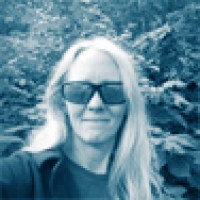
Designed by Tour and his team of student researchers, the single-molecule sub is built using 244 atoms. It is capable of swimming through a fluid with a tail-like propeller that spins at more than 1 million RPM. Each full revolution of the propeller moves the submersible forward by 18 nanometers, which equates to a speed of one inch per second. Though slow compared to other larger vehicles, that speed is breakneck for molecular-level machines.
The motor in the nanoscale submersible is powered by ultraviolet light, which causes the double bond holding the rotor to the body of the sub to break into a single bond. This breakage cases the rotor to turn a quarter turn. The motor, by returning to its normal lower energy state, turns the rotor another quarter turn. This turning process continues as long as the sub is exposed to UV light. Though the sub moves easily through liquids, its does so randomly as the rotor mechanism is not designed for steering.
To help measure the movement of the submersible, the researchers partnered with professor Gufeng Wang at North Carolina State University. The team of researchers used a custom confocal fluorescence microscope to track the sub as it traveled through a solution. The researchers flooded the sub with UV light to provide enough power for movement, and a laser to light up the sub’s pontoons, which fluoresce red when excited by a laser. Using this setup, the Rice team was able to analyze the movement of one single-molecule sub at a time. The Rice researchers published their work in the journal Nano Letters.
Now that they have proven their submersible vehicle can move efficiently, the Rice team is ready to expand upon this breakthrough. “This is the first step, and we’ve proven the concept. Now we need to explore opportunities and potential applications,” said lead author and Rice graduate student Victor García-López. “There’s a way forward.” One such forward-looking use could be the adaptation of the sub for drug delivery to targeted parts of the body.



